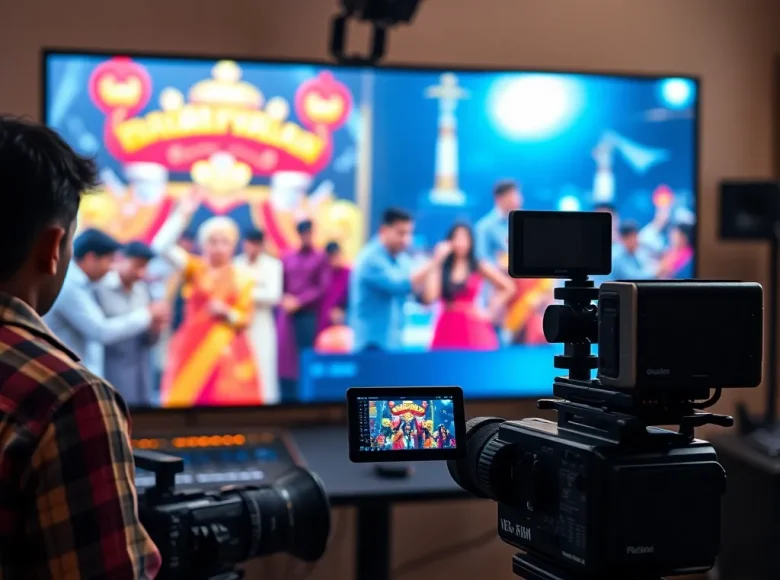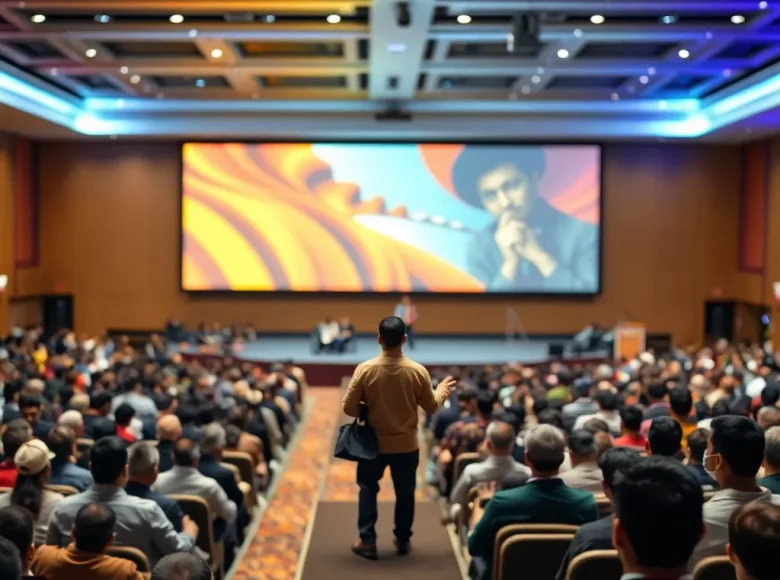Introduction
India is one of the world’s most linguistically diverse countries, with 22 official languages and hundreds of dialects spoken daily. From Bollywood blockbusters to regional news channels, from YouTube creators to OTT platforms, the demand for accessible, multilingual content has never been greater.
Speech-to-Text (STT) technology — a powerful tool that converts spoken language into accurate, editable text. For Indian media, STT is not just a technological advancement, but a game-changer for inclusivity, reach, and engagement.
In this blog, we’ll explore how Speech-to-Text is shaping the Indian media landscape through transcription, subtitles, and multilingual content delivery. We’ll also look at the challenges, real-world use cases, and why platforms like Speakatoo are emerging as leaders in this space.
Understanding Speech-to-Text Technology
Speech-to-Text (STT) is an AI-powered process where spoken words are automatically transcribed into written text.
Key Components of STT:
- Automatic Speech Recognition (ASR): Core engine that decodes speech.
- Natural Language Processing (NLP): Helps interpret accents, tones, and context.
- Language Models: Specialized datasets trained on regional languages and dialects.
In the Indian context, STT must handle:
- Multiple scripts (Devanagari, Bengali, Tamil, Malayalam, etc.)
- Diverse accents and pronunciations
- Code-mixed speech (like Hinglish or Tamglish)
The complexity makes India a unique testing ground for STT tools.
Why Indian Media Needs Speech-to-Text

1. Accessibility for Diverse Audiences
India has over 63 million people with hearing impairments. Subtitles generated from STT make media accessible to this audience.
2. Expanding Reach Beyond Languages
STT enables real-time transcription in multiple Indian languages. A Hindi news bulletin can be instantly subtitled in Marathi, Tamil, or Bengali.
3. Boosting Content Discovery (SEO)
When spoken content is converted into text, it can be indexed by search engines, increasing discoverability for podcasts, videos, and OTT shows.
4. Cost and Time Savings
Manual transcription is slow and expensive. STT automates the process, cutting costs dramatically for media houses.
5. Global Audience Engagement
Indian movies and web series with accurate subtitles are consumed globally, thanks to STT-assisted transcription.
Applications of Speech-to-Text in Indian Media

1. Film & Entertainment
Bollywood, Tollywood, and regional cinema are massive industries. Subtitles generated by STT:
- Make films accessible globally.
- Allow regional audiences to enjoy content in their native language.
- Enable OTT platforms like Netflix, Hotstar, and Amazon Prime to serve diverse audiences.
2. News Broadcasting
Indian news channels broadcast in dozens of languages. STT helps:
- Generate real-time captions for live TV.
- Transcribe interviews and press conferences instantly.
- Translate news into multiple regional languages.
3. YouTube & Digital Creators
With millions of creators producing video content daily, STT provides:
- Auto-generated captions for better engagement.
- Higher SEO rankings with searchable transcripts.
- Wider accessibility for non-native speakers.
4. OTT Platforms & Streaming
OTT services thrive on multilingual viewership. Speech-to-Text ensures:
- Accurate subtitles for global users.
- Faster dubbing & voiceover scripts.
- Support for regional-first shows.
5. Educational Media
E-learning platforms use STT to:
- Convert lectures into readable notes.
- Provide subtitles in regional languages.
- Make courses accessible to visually and hearing-impaired learners.
Transcription: The Backbone of Indian Media
Transcription is the process of converting spoken dialogue into written text.
Benefits for Indian Media:
- ✅ Archiving interviews, panel discussions, and events.
- ✅ Creating searchable databases of media content.
- ✅ Speeding up content editing and translation workflows.
For example, a political debate in Hindi can be instantly transcribed and translated into English and Tamil, making it accessible to pan-India audiences.
Subtitles: Enhancing Accessibility & Engagement
Subtitles are no longer optional — they are essential.
Why Subtitles Matter:
- Accessibility: Helps the hearing-impaired audience.
- Engagement: Viewers are more likely to watch videos till the end.
- Multilingual Reach: Content travels beyond regional boundaries.
- Silent Viewing: Many users watch videos without sound in public places.
STT-generated subtitles are making Indian media more inclusive and globally competitive.
Multilingual Content Creation
India’s diversity demands content in multiple languages. Speech-to-Text empowers creators to:
- Auto-translate transcripts into multiple languages.
- Repurpose one video/audio into different markets.
- Deliver personalized, localized experiences.
Imagine a Kannada podcast transcribed with STT, translated into English and Hindi, and distributed to millions. That’s the future of Indian media.
Speakatoo: Powering Indian Media with Speech-to-Text
Among various STT solutions, Speakatoo stands out as a robust, India-focused tool.
Key Features for Media Professionals:
- 🎤 Supports 12+ Indian languages (Hindi, Tamil, Telugu, Bengali, Marathi, Gujarati, etc.)
- ⚡ High Accuracy for accents, dialects, and mixed speech (e.g., Hinglish).
- 🌍 Multilingual Subtitles for films, videos, and OTT content.
- 📂 Export Options in TXT, SRT, and DOC formats.
- 🔄 Integration with content platforms for seamless workflows.
By combining AI + local language expertise, Speakatoo ensures Indian media professionals get fast, accurate, and affordable STT solutions.
Challenges in Implementing STT in Indian Media
Despite rapid progress, challenges remain:
- Accent & Dialect Diversity – A single language like Hindi has multiple regional pronunciations.
- Code-Switching – Indians often mix English and regional words in the same sentence.
- Noisy Environments – Media often captures audio in public places with background noise.
- Script Differences – Same language can have different scripts (e.g., Sindhi).
- Training Data Scarcity – AI needs more labeled datasets for Indian languages.
Future of Speech-to-Text in Indian Media
Looking ahead, STT will evolve in exciting ways:
- Real-Time Multilingual Subtitling during live events.
- Voice Biometrics integrated with STT for security.
- AI-Powered Translation bridging even dialects.
- Low-Bandwidth Optimization for rural India.
- Integration with AR/VR in immersive media.
By 2030, nearly all Indian digital content could come with AI-generated subtitles and transcriptions.
Frequently Asked Questions (FAQs)
Q1. Which Indian languages does Speech-to-Text support?
Most advanced STT tools, like Speakatoo, support Hindi, Bengali, Tamil, Telugu, Marathi, Gujarati, Kannada, Punjabi, Malayalam, Urdu, Assamese, and Odia.
Q2. Can STT be used for live news captions?
Yes, real-time STT can generate accurate captions for live TV and streaming.
Q3. How accurate is STT for Indian accents?
Tools trained on Indian datasets, like Speakatoo, achieve 90–95% accuracy.
Q4. Is STT affordable for small creators?
Yes, cloud-based STT platforms offer cost-effective packages for freelancers, YouTubers, and educators.
Q5. Can STT generate subtitle files for OTT?
Absolutely. Export options like SRT and VTT are available for direct integration.
Conclusion
The Indian media industry stands at the crossroads of innovation and accessibility. With Speech-to-Text technology, content creators, media houses, educators, and OTT platforms can:
- Break language barriers.
- Make content accessible to millions.
- Save costs and boost efficiency.
- Expand audiences across regions and borders.
As the industry embraces AI-powered STT solutions like Speakatoo, we are moving closer to a future where every Indian story can be told, heard, and understood in every language.
👉 If you’re a media professional, it’s time to explore how Speakatoo Speech-to-Text can power your transcription, subtitles, and multilingual workflows.
